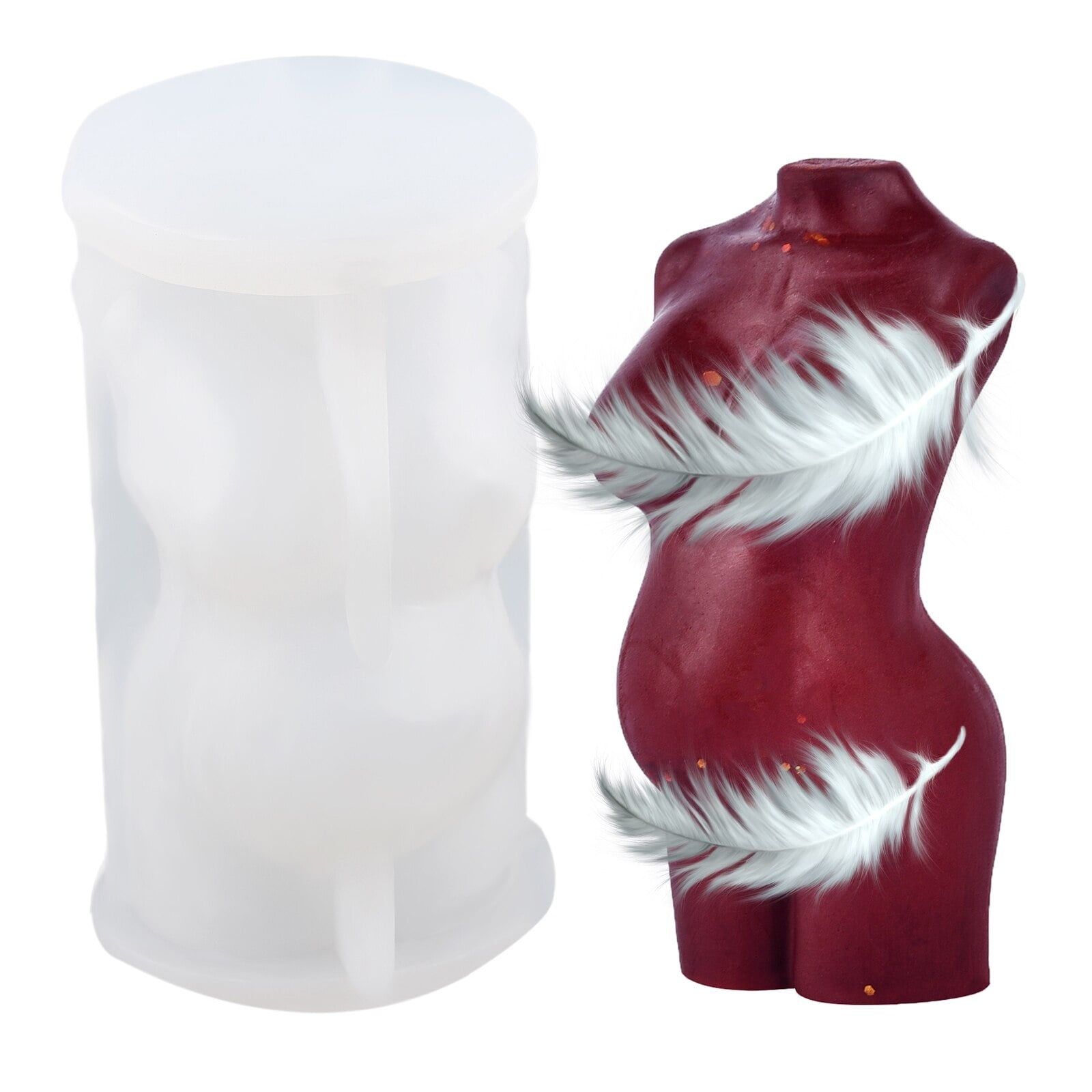Candle making is a craft that has been practiced for centuries, with the primary purpose of providing light. However, candles have evolved over time to become not just functional items but also beautiful and decorative pieces. The aesthetic appeal of candles plays a vital role in enhancing our living spaces, creating ambiance, and increasing our overall sense of well-being.
One important aspect of candle aesthetics is frosting. Frosting refers to the white or opaque coating that can form on the surface of candles, resembling frost on a cold window pane. While some may view frosting as an imperfection or flaw, many candle makers and enthusiasts actually embrace it as an integral part of the candle’s charm and uniqueness.
Frosting occurs when certain ingredients in the candle’s wax crystalize and solidify at different rates during the cooling process. This can result in a beautiful frosted appearance that adds character to the candle. Understanding the science behind frosting is essential for candle makers who want to harness its effects and use it to their advantage when creating their signature products.
In this article, we will delve deeper into what frosting means in candle making. We will explore its significance in enhancing the visual appeal of candles and how it contributes to the overall aesthetic experience.
Additionally, we will uncover the science behind frosting, different types of frosting that can occur, and factors that contribute to its formation. Whether you are a seasoned candle maker seeking to minimize frosting or a novice looking for tips on achieving your desired effect, this article aims to provide you with valuable insights and practical advice on navigating this fascinating aspect of candle making.
What is frosting and its significance in candle making
Frosting is a common term used in candle making to describe the white, crystalline-like visual effect that appears on the surface of soy candles. It resembles frost on a cold windowpane or an icing on a cake, hence the name. While some may view frosting as an imperfection, many candle makers and enthusiasts consider it to be a desirable characteristic that adds uniqueness and charm to candles.
The significance of frosting in candle making goes beyond its aesthetic appeal. It is often seen as an indication of high-quality soy wax and natural ingredients used in the candle-making process. As soy wax is derived from soybean oil, which is a natural and renewable resource, it tends to develop frost more than other waxes such as paraffin or beeswax. Therefore, frosting is often associated with environmentally-friendly and sustainable candles.
Moreover, frosting can also be viewed as a testimony to craftsmanship. Candle makers who strive for perfection often seek to minimize or eliminate frosting in their candles. However, some artisans purposely embrace frosting as part of their artistic vision, using it as a design element to create unique and visually appealing candles. These artisanal creations are highly valued by collectors and candle enthusiasts for their distinctive beauty.
| Significance | Explanation |
|---|---|
| Aesthetic Appeal | Frosting adds uniqueness and charm to candles. |
| Quality Indicator | Frosting shows the use of high-quality soy wax. |
| Sustainability | Frosting is associated with environmentally-friendly candles made from renewable resources. |
| Craftsmanship | Frosting can be used as a design element by skilled candle makers. |
Understanding the science behind frosting in candles
One of the most intriguing aspects of candle making is the science behind frosting. Frosting refers to the white, powdery appearance that can develop on the surface of candles over time. While some candle makers view frosting as an undesirable flaw, others embrace it as a natural and unique characteristic.
What causes frosting?
To understand the science behind frosting, it is essential to grasp the concept of crystallization. When candles cool down after being poured, they undergo a process called crystallization. This occurs when the wax molecules align and form crystals on the surface of the candle. These crystals are what give rise to the frost-like appearance.
The composition of the wax plays a significant role in whether or not a candle will experience frosting. Soy wax, which is made from soybean oil, is particularly prone to frosting due to its high percentage of natural oils. On the other hand, paraffin wax tends to have a more smooth and glossy finish with minimal frosting.
Why do some people appreciate frost?
While many candle makers view frosting as an imperfection, others perceive it as a distinctive feature that adds charm and character to their creations. Frosting can create an aesthetically pleasing effect and give candles a rustic or vintage look. It also indicates that the candle is made from 100% natural soy wax without additives or chemicals.
Moreover, some candle enthusiasts believe that frost can enhance scent throw. They argue that the porous texture created by frosting allows for better diffusion of fragrance oils throughout the melt pool, resulting in a stronger and longer-lasting aroma.
However, if you prefer a smooth and polished look for your candles, there are ways to prevent or minimize frosting through various techniques and ingredients. Understanding these methods can be invaluable for achieving your desired aesthetic in candle making while embracing or avoiding frost based on personal preference.
Different types of frosting in candle making
Cold Frosting
Cold frosting occurs when the wax naturally crystallizes and creates a frosted appearance on the surface of the candle. This type of frosting typically appears as a white or opaque layer on the top of the candle, resembling frost on a window pane. Cold frosting is more common in soy and natural waxes because they have a higher likelihood of experiencing this phenomenon due to their composition.
Heat Frosting
Heat frosting, also known as hot frosting, happens when candles are exposed to extreme temperature changes during the cooling process. This sudden change in temperature causes the wax to contract and create cracks or lines on the surface of the candle, giving it a frosted appearance. Heat frosting is more likely to occur with paraffin wax candles, as they tend to shrink and contract more than other types of waxes.
Micro Frosting
Micro frosting refers to tiny crystals that form all over the surface of the candle, creating a shimmering effect similar to sparkling snow. This type of frosting can occur in any type of candle wax and can be quite eye-catching and aesthetically pleasing. Micro frosting is often favored by candle makers who want to enhance the visual appeal of their candles.
Understanding these different types of frosting can help candle makers identify and appreciate the various effects that can be achieved in their creations. Whether you prefer a cold frost for its natural charm or a micro frost for its dazzling sparkle, knowing how each type forms allows for intentional design choices in your candle making process.
In the next section, we will explore some factors that contribute to frosting in candles so you can better control and manipulate these effects in your craft.
Factors that contribute to frosting in candles
Frosting is a common phenomenon that occurs in candle making and can greatly impact the overall aesthetic appeal of the finished product. Understanding the factors that contribute to frosting can help candle makers create better quality candles and minimize this undesired effect.
One major factor that contributes to frosting in candles is the type of wax being used. Soy wax, for example, is particularly prone to frosting. This is because soy wax has a high percentage of natural oils, which can cause the wax to crystallize when exposed to temperature changes. Other natural waxes, such as beeswax and palm wax, may also be more prone to frosting compared to paraffin wax.
The cooling process of candles also plays a significant role in the occurrence of frosting. Rapid cooling or exposure to cold temperatures during the cooling process can increase the likelihood of frost forming on your candles. It is important to allow your candles to cool at a consistent room temperature and avoid placing them in an area with drafts or extreme temperature changes.
To minimize frosting, candle makers can consider using additives such as stearic acid or vybar. These additives can help stabilize the wax and reduce the chances of crystallization occurring during cooling. Additionally, choosing a different type of wax, like paraffin or a blend specifically formulated for minimal frosting, may also be an effective solution.
How to prevent and minimize frosting in candle making
Frosting in candles is a common occurrence that many candle makers try to avoid. While some candle enthusiasts may appreciate the natural and rustic look of frosting, others prefer a smooth and clean finish. In this section, we will explore some effective techniques to prevent and minimize frosting in candle making.
- Use high-quality wax: The type and quality of wax used in candle making can greatly affect the occurrence of frosting. It is important to use a high-quality wax that is specifically formulated for candle making. Soy wax, for example, is known to have a higher tendency to frost compared to other waxes such as paraffin or beeswax. Experimenting with different types of wax can help you find the one that produces minimal frosting.
- Proper temperature control: The temperature at which you pour the wax into the mold plays a crucial role in reducing frosting. Pouring the wax at too high temperatures can cause rapid cooling and result in excessive frosting. On the other hand, pouring at too low temperatures can lead to uneven surfaces and poor adhesion between layers. It is recommended to pour the wax at a temperature within the manufacturer’s recommended range.
- Slow cooling process: Allowing your candles to cool slowly and naturally can help minimize frosting. Rapid cooling or exposing candles to extreme temperature changes can increase the likelihood of frosting occurring. To achieve a slow cooling process, it is advisable to place your candles in a cool location away from direct sunlight or drafts.
| Technique | Description |
|---|---|
| Use high-quality wax | Using a high-quality wax specifically formulated for candle making can minimize frosting. |
| Proper temperature control | Pouring the wax at an appropriate temperature within the manufacturer’s recommended range can reduce frosting. |
| Slow cooling process | Allowing candles to cool naturally and avoiding rapid temperature changes can help minimize frosting. |
Tips and tricks for achieving a desired frosting effect
Achieving a desired frosting effect in candle making can add a beautiful and unique touch to your candles. Whether you are aiming for a rustic, vintage look or a modern and elegant design, there are various tips and tricks you can follow to achieve the desired frosting effect. Here are some helpful suggestions:
- Blending different waxes: One effective way to create a desired frosting effect is by blending different types of waxes. For example, combining soy wax with other natural waxes like coconut wax or beeswax can help achieve a more pronounced frosting effect. Experimenting with different wax blends can provide a range of results and allow you to create candles with varying levels of frosting.
- Controlling cooling temperatures: The rate at which the candle cools plays an essential role in achieving frosting. To increase the likelihood of frosting occurring, it is recommended to cool your candles slowly and at consistent temperatures. You can do this by allowing your candles to cool naturally at room temperature or placing them in a refrigerator for controlled cooling.
- Using additives: Adding certain additives to your wax mixture can also enhance the frosting effect in candles. One popular additive is stearic acid, which not only aids in scent throw but also contributes to increased opaqueness and texture, resulting in more visible frosting on the surface of the candle.
- Manipulating pour temperature: Adjusting the pour temperature of your wax can influence the level of frosting as well. Pouring your wax at lower temperatures tends to produce more pronounced and extensive frost, whereas pouring at higher temperatures may result in minimal or no frosting at all.
- Embracing imperfections: Remember that achieving a desired frosting effect does not always mean creating perfect-looking candles. Embracing imperfections caused by frost formations can actually add character and charm to your creations. So don’t be afraid to experiment and allow nature’s unpredictability to guide you towards unique and stunning results.
By employing these tips and tricks, you can have more control over the frosting effect in your candles and create visually appealing pieces that are sure to impress. Keep in mind that experimentation is key, as what works for one candle may not necessarily work for another. Enjoy the process of exploring different techniques and creating candles that reflect your own personal style and creativity.
Common misconceptions about frosting in candle making
While frosting is a commonly encountered phenomenon in candle making, there are several misconceptions and misunderstandings associated with it. These misconceptions can often lead to frustration and confusion among candle makers. In this section, we will debunk some of the most common misconceptions about frosting in candle making.
One of the most prevalent misconceptions is that frosting indicates a poor quality or faulty candle. However, this is not true. Frosting is a natural reaction that occurs when soy wax candles cool down and solidify. It appears as a white, frosted-like layer on the surface of the candle, giving it a rustic and vintage look. Many people actually appreciate this aesthetic aspect of frosting in candles and consider it to be a desirable characteristic.
Another misconception is that frosting affects the performance or burn time of a candle. This is not accurate either. Frosting does not impact the functionality or quality of the candle in any way.
It is purely an aesthetic occurrence caused by the chemistry of soy wax when exposed to temperature changes. Therefore, candle makers should not view frosting as a defect or flaw that needs to be corrected but rather embrace it as part of the unique charm and character of soy wax candles.
Lastly, some people believe that certain fragrance oils or additives cause more frosting than others. While it’s true that different additives can affect how much frosting occurs, it ultimately depends on various factors such as wax composition, pouring temperature, cooling rate, and even the container used. It’s important for candle makers to experiment with different variables to find their desired level of frosting or learn techniques to minimize it if preferred.
By understanding these common misconceptions about frosting in candle making, candle makers can approach their craft with greater knowledge and confidence. Embracing and appreciating the beauty of frostings can open up new creative possibilities while dispelling any unnecessary concerns or frustrations along the way.
Frequently asked questions about frosting in candle making
As with any craft or hobby, candle making can sometimes lead to questions and uncertainties. One common concern that arises among candle makers is the phenomenon of frosting. Here are some frequently asked questions about frosting in candle making that will help shed light on this topic.
- Q: What exactly is frosting in candle making?
- A: Frosting refers to the white, hazy appearance that can develop on the surface of a candle during the cooling process. It resembles a layer of frost or ice crystals, hence the name. While some people find it aesthetically pleasing and even desirable, others may see it as a flaw or imperfection.
- Q: Why does frosting occur in candles?
- A: The science behind frosting lies in the natural properties of soy wax, which is vulnerable to temperature changes and crystallization. When soy wax cools too quickly, it can cause these tiny crystals to form on the surface, resulting in frosting. Additionally, ingredients such as fragrance oils or colorants can also influence the occurrence of frosting.
- Q: Can you still use candles with frosting?
- A: Absolutely. Frosting does not affect the scent throw or burn performance of a candle. In fact, many people enjoy the unique texture and appearance that frosted candles provide. However, if you prefer a smooth and polished look for your candles, frosty surfaces may not align with your aesthetic preferences.
By addressing these frequently asked questions, candle makers can gain a better understanding of what exactly frosting is and why it occurs in their creations. Whether you embrace it or try to prevent it altogether, knowing more about this common phenomenon will allow you to make informed decisions regarding your candle making process.
Conclusion and final thoughts on frosting in candle making
Conclusion:
In conclusion, frosting in candle making is a natural occurrence that can add a unique and beautiful aesthetic to candles. While it may not be desired by all candle makers or consumers, understanding the science behind frosting can help to prevent and minimize its occurrence. By considering factors such as wax composition, cooling rates, and fragrance choices, candle makers can take steps to reduce frosting in their products.
However, it is important to remember that frosting does not affect the quality or burn performance of the candle. It is simply a visual effect that occurs when the wax crystallizes. Additionally, there are ways to embrace and enhance the frosting effect if desired. Experimenting with different techniques like using additives, adjusting pour temperatures, or incorporating texture can create stunning frosted designs on candles.
It is also crucial to address some common misconceptions about frosting in candle making. Many beginners may mistake frosting for flaws or imperfections in their candles, but it is actually a completely natural phenomenon. Educating both candle makers and consumers on this aspect of candle aesthetics can lead to a greater appreciation for the artistry involved in handmade candles.
Overall, frosting adds character and charm to candles and should be embraced rather than feared. As with any art form, practicing and experimenting will help candle makers develop their own techniques for achieving their desired frosting effects. So whether you love the frosted look or prefer a smooth finish, understanding how frostings occur and how they can be controlled will undoubtedly elevate your candle-making game.
Frequently Asked Questions
What does frosting look like on a candle?
Frosting on a candle is a natural phenomenon that occurs when the wax cools and crystallizes, resulting in a white, frosted appearance on the surface of the candle. It can resemble snowflakes or ice formations, creating an aesthetic texture that many people find appealing.
Is frosting normal in candles?
Yes, frosting is considered normal in candles, particularly those made from soy wax or other natural materials. It is more common in vegetable-based waxes compared to paraffin wax candles. While some may see frosting as an imperfection or defect, others appreciate it as a sign of a high-quality and eco-friendly candle.
How should frosting look?
Ideally, frosting should have a consistent and even pattern throughout the candle’s surface. It should not be excessive or cover the entire candle entirely, but rather display a moderate amount of crystallization that enhances its visual appeal.
The texture might resemble delicate lace-like patterns that add character to the candle when it is lit, especially as the light shines through the frosted areas. However, the exact appearance of frosting can vary depending on factors such as the type of wax used and individual preferences for aesthetics.

Welcome to my candle making blog! In this blog, I will be sharing my tips and tricks for making candles. I will also be sharing some of my favorite recipes.





